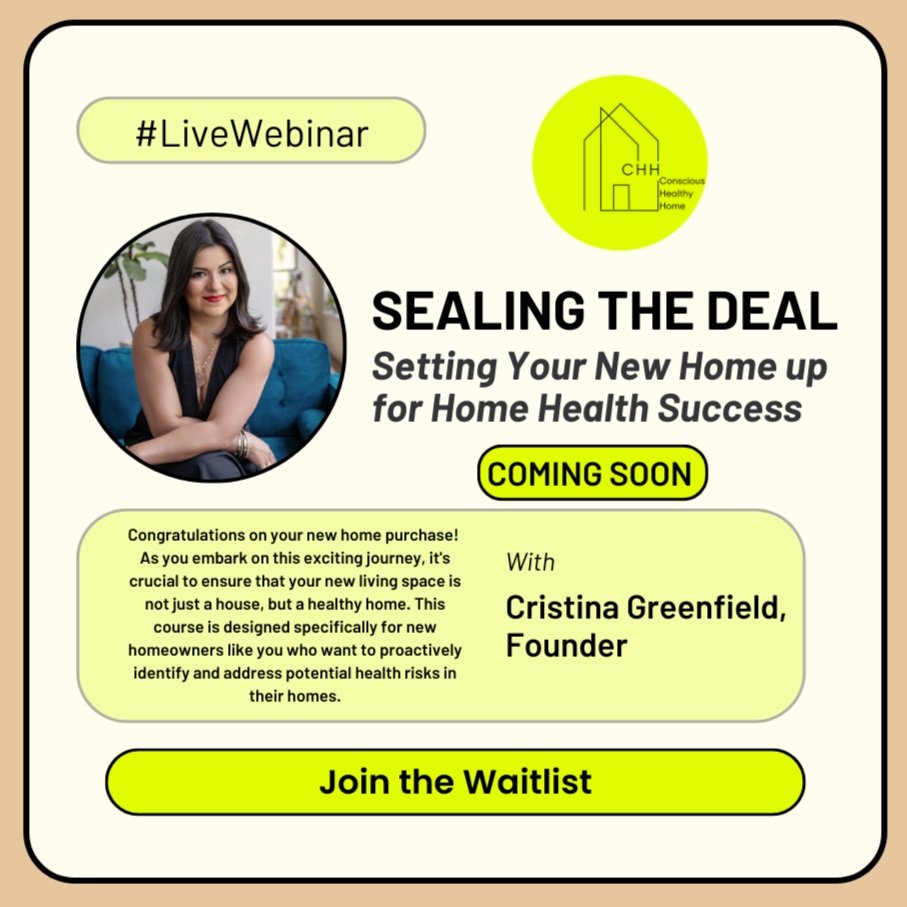Passive House Design/Build: A Powerful Tool for Mold Risk Reduction
This is part 2 of a 3-part series on Passive House.
Read Part 1, here where I introduced the basic principles of Passive House design and its numerous benefits. and stay tuned for the next blog, where I will explain in more detail how this methodology is tested to ensure the measures that make this a better way to build are actually achieved.
Today, let’s explore a crucial yet often overlooked advantage of this innovative building methodology: its significant contribution to reducing mold risk. This aspect of Passive House design is vital for building health, occupant wellbeing, and protection of your financial investment.
The Mold Problem in Traditional Buildings
Before we delve into how Passive Houses mitigate mold risk, it's important to understand the conditions conducive to mold growth.
Air (air is everywhere and contains moisture)
Water (bulk water and condensation or vapor)
Food source (most traditional building materials, dust, wood, etc.)
This is where the climate zone (CZ) you intend to build in (and don’t forget the microclimate) plays one (albeit large) role in the development of your mold-mitigation strategies. For example, if you live in a hot/humid climate, and we know warm air is always traveling to cold air, we know the outdoor air is constantly wanting to come IN to the cool, conditioned space. Our condensing surface, then, is likely the backside of the drywall. We don’t use vapor barriers in the South, but we do need to really be sure those walls allow for vapor movement and drying.
If we are in a cold climate, the opposite is true.
The warm indoor air is wanting to push OUT toward the cool outdoor space. Here, the condensing surface is likely the interior side of the sheathing (closest to the fluffy insulation). Depending on the overall thermal strategy, a vapor barrier may need to be installed behind the drywall to mitigate this risk. Smart barriers are fantastic as they prevent bulk water intrusion, but allow for vapor movement.
Of course everyone needs to watch for water leaks from plumbing, roofing leaks, window leaks, etc. But the vapor drive and condensation risk is a bit tricky and depends a lot on the climate where you are building.
This is not a Passive House-specific strategy, it’s just good maintenance. If you need tips and tools, you can find them inside the Ultimate Healthy Home Maintenance Guide.
Next, why IS mold such a persistent issue in traditional construction?
Here are a few reasons:
1. Inconsistent temperatures across building materials leading to condensation
2. Poor ventilation causing moisture buildup
3. Improper sizing and/or installation of mechanical systems
4. Thermal bridges creating cold spots where mold can thrive
5. Inadequate air sealing allowing moisture to penetrate the building envelope
How Passive House Design Mitigates Mold Risk
Passive House principles work synergistically to create an indoor environment that inherently reduces the risk of mold growth. Here's how:
2. Humidity Control:
The balanced ventilation system with heat recovery (often referred to as an ERV or HRV) plays a crucial role in managing indoor humidity levels. By constantly exchanging indoor air with fresh outdoor air, it helps prevent the buildup of excessive moisture that can lead to mold growth. Note that while ERV and HRV do have a dehumidification effect, they are not dehumidifiers. In a hot/humid climate, you likely want to have both to keep indoor RH below 50-55%. Standalone dehus may work great for this. I like these (link)
3. Elimination of Thermal Bridges:
Thermal bridges are areas in the building envelope where heat can easily transfer, leading to cold spots. By eliminating these, Passive Houses reduce the risk of condensation forming on interior surfaces, thereby reducing the potential for mold growth.
Think about it–an R-50 wall with 25% framing is not REALLY an R-50 wall. It’s more like an R-32 wall after you account for the lesser R-value of the framing members.
4. High-Quality Windows:
The triple-paned windows used in Passive Houses not only provide excellent insulation but also maintain warmer interior glass surfaces. This reduces the risk of condensation forming on windows, a common site for mold growth in traditional homes.Similar to the above note on framing members being thermal bridges, if you have an R-50 Wall and install an R-3 (u-0.33) Energy Star Window, the whole wall R-value is now reduced to just R-15! Mind blowing, right?
5. Proper Air Sealing:
The airtight construction of Passive Houses prevents warm, moist air from penetrating the building envelope. We all know that air contains moisture, yes? This is crucial because when warm air meets cold surfaces (within walls or attics, for example), it can condense. Then you have moisture, food source, building material, and of course air, all which create ideal conditions for mold growth.
Why do you care about mold within wall cavities? The answer also has to do with air.
Think: exhaust fans…and simple physics.
Heat flows from hot to cold - if you live in a hot climate, the hot/moisture laden air is CONSTANTLY trying to invade your building enclosure (cool/conditioned space) and it will take the path of least resistance (i.e. gaps in the air barrier)
CFM (air) out ALWAYS equals CFM (air in) - when you turn on your exhaust fans in your bathroom or the range hood while cooking, you are forcing air OUT. This means an equivalent amount of air is coming in…but from where. The answer can be, building defects (i.e. holes in the building enclosure/air barrier…i.e. Through your walls and whatever the heck is inside them)
Moisture moves from more to less - if you live in a hot/humid climate, for example, and the outside air is a RH of 100%, then that air is very, wet. You might be trying to keep your indoor RH low (to avoid creating conditions conducive to mold). Now the moisture-laden air just WANTS to get into the drier area and it travels through…you guessed it…gaps in the building enclosure (air barrier).
6. Continuous Insulation:
By providing a consistent layer of insulation around the entire building envelope, Passive Houses eliminate cold spots where condensation and mold could potentially form. When we increase the resistance between two temperatures, we reduce the heat loss…double the resistance = half the heat loss. Go back up and revisit the Heath Loss Calculation.
7. Controlled Ventilation:
Unlike in traditional homes where moisture-laden air can become trapped, the constant, controlled ventilation in Passive Houses ensures that moist air from bathrooms, kitchens, and other high-humidity areas is efficiently removed. Review the physics discussion in section 5, above.
Photo Credit: BASC
The Holistic Approach to Mold Prevention
What makes the Passive House approach to mold prevention so effective is its holistic nature. Rather than addressing mold risk with a single solution, Passive House design incorporates multiple strategies based in science and physics that work together to control air and water, thereby creating an environment where mold simply struggles to take hold.
This comprehensive approach not only reduces the risk of mold growth but also contributes to overall indoor air quality and occupant health. By maintaining optimal temperature and humidity levels, Passive Houses create living spaces that are not just energy-efficient, but also significantly healthier than traditional buildings.
Challenges and Considerations
The Passive House methodology goes a long way to controlling the factors that can lead to mold growth and building compromise. What Passive House doesn’t automatically address are material handling, storage, and specifications.
I’d consider these pretty low hanging fruit, but left unaddressed in the construction documents, you could still find yourself in a battle over compromised building materials (like moldy lumber). Be sure you are proactive in addressing what happens WHEN, not IF weather impacts the health of your building materials—to include testing, remediation, and specifications for material moisture levels acceptable for use (and moving on to the next phase, i.e. closing in). This should be discussed, documented, and agreed to BEFORE you ever sign a build contract…NOT after.
Conclusion
The mold-mitigating effects of Passive House design underscore the far-reaching benefits of this innovative building methodology. By addressing not just energy efficiency but also indoor air quality and occupant health, Passive Houses represent a holistic approach to sustainable living.
Taking it a step further and proactively discussing expectations with respect to building material handling BEFORE material is used, and remediation steps if it become compromised AFTER use is an vital additional measure that should not be overlooked for anyone, but especially for those to whom mold risk is a concern. Again, memorializing the agreed to protocol in the construction documents and BEFORE signing a build contract.
In our next post, we'll explore the rigorous testing methodologies used during the construction of Passive Houses to ensure they meet the exacting standards required for certification. This testing process is crucial for verifying that the finished building will indeed deliver on the promises of energy efficiency and mold risk reduction we've discussed.
.
.
.
Are you following these concepts, but want help putting them into practice in your own build? Apply to work with me 1:1 by visiting the link, here.
Stay conscious and curious, friend.
♥️C



















